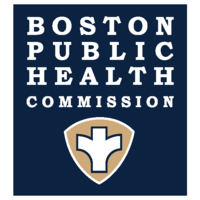Group A Streptococcus
This fact sheet answers frequently asked questions about Group A Streptococcus.
Group A streptococcus is a bacteria. People commonly carry group A streptococcus in their throat or on their skin. Usually people have no symptoms of illness.
The basics
What is group A streptococcus?
At times, group A streptococcus bacteria can cause mild illness such as strep throat or impetigo. On rare occasions, serious illness can occur when the bacteria invade parts of the body such as the blood or tissue around the muscle. Two of the more severe forms of invasive disease are necrotizing fasciitis and Streptococcal Toxic Shock Syndrome.
How are group A streptococci spread?
The bacteria spreads through direct contact with nose and throat mucus from an infected individual. It can also spread through direct contact with an infected wound on the skin. People with group A streptococcus related illness are more likely to spread infection. Those who carry the bacteria but have no symptoms are much less contagious. A person is no longer contagious 24 hours after treatment with an appropriate antibiotic. It is still important to take all the prescribed antibiotics. Casual contact and household items rarely spread the bacteria.
Why does invasive group A streptococcal illness occur?
Invasive group A streptococcus illness occurs when the bacteria is able to invade parts of the body where it is not normally found. This rarely occurs, but may happen when a person has sores or other breaks in their skin that allow the bacteria to get into the body. Health conditions that affect a person's immunity make it difficult to fight off infection and can make illness more likely. Some strains of group A streptococcus are more likely to cause severe disease than others.
Who is most at risk of invasive group A streptococcal disease?
Most healthy people who come in contact with group A streptococcus develop a throat or skin infection or have no symptoms at all. People with chronic illnesses are at higher risk of invasive disease. Chronic illnesses at a higher risk include:
- cancer
- heart disease
- HIV
- alcoholism
- diabetes
- those on kidney dialysis
- those who use medications such as steroids
Prevention
How can I prevent invasive group A streptococcal infections?
To reduce the spread of all types of group A streptococcal infections, a person can practice good hand washing. Be sure to wash your hands after coughing, sneezing, and before preparing or eating foods. Persons with a sore throat should talk with their doctor. If tests are positive for strep throat, the ill person should stay home from work, school or daycare until 24 hours after taking antibiotics. Keep all wounds clean and watch for signs of possible infection such as redness, swelling and pain in the wound area. If these signs occur, especially in a person who also has a fever, consult a doctor immediately.
Treatment
Can you treat invasive group A streptococcal disease?
You can treat group A streptococcus bacteria with common antibiotics. In addition to antibiotics, time in an intensive care unit and sometimes surgery are necessary for severe illness.




